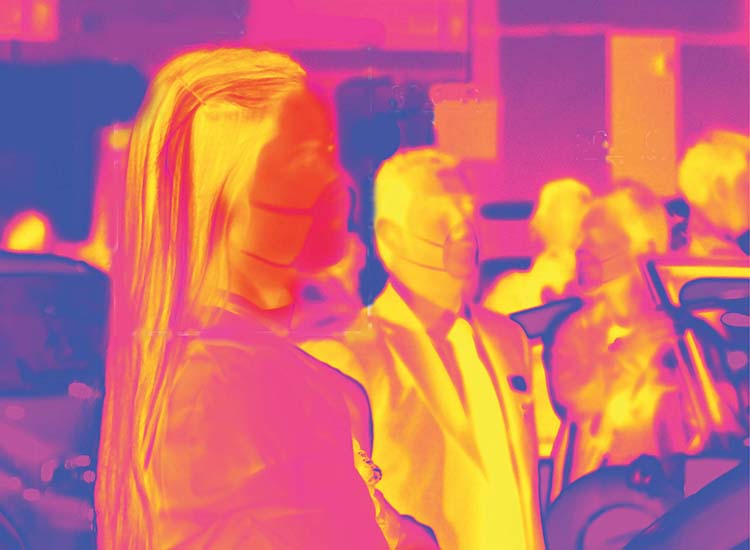Thermal imaging solutions: Frequently asked Questions
Thermal imaging solutions are being implemented across the UK and worldwide as one tool in the toolbox for dealing with the COVID-19 global pandemic. We quizzed Steve Emmins of HIKVISION on some of the frequently asked questions about this technology.
How do staff and visitors respond?
Initially, there are concerns about the personal nature of thermal imaging solutions. Some systems work by assessing the surface temperature of skin on the foreheads of people as they pass the camera. They then indicate when that temperature is outside the range that is considered normal. But I have found that during these challenging times, the response from people has been very positive.
In fact, a number of businesses installed systems of this kind very early in the COVID-19 pandemic as part of a range of new ways of working to safeguard staff. Their key motivation is to give staff a level of confidence that everything possible is being done to protect them. As long as the new measures are communicated well to staff and relevant legislation is followed, people are happy.
This technology is one of only a few proactive measures that a company can take to screen people before they enter places of work and other premises. Of course, businesses and organisations are also implementing other required measures such as social distancing, regular hand washing and, in some cases, wearing masks.
Generally speaking, people are reassured that every precaution is being taken and are pleased there are extra measures in place.
How are security staff involved?
Security staff are involved with monitoring the screens where the heat maps of people’s faces are being displayed and responding to alerts that are raised. Often these will be behind reception areas where glass screens have been installed. On the whole, they are comfortable using the systems because they are not required to have contact with the people being screened.
As part of implementing these systems, every member of staff must be informed of their use and give their consent to be screened. Organisations are now planning for how they will gain the permission from visitors for the use of these systems. Additionally, as with any CCTV implementation, appropriate signage must be in place to explain what is being monitored and why. These measures mean the security staff are happy to manage these systems because they know that everyone has agreed to the monitoring and is happy for this to be done.
Of course, each organisation that implements these systems needs to consider what measures to put in place if an alert is triggered. In most cases, this involves asking the individual to move to an assessment area. It may be that cycling or running to work has caused a high temperature. People should be allowed a short time to cool down and be retested. This may involve the careful use of a thermometer by trained personnel.
Businesses and their security teams are carefully developing policies and procedures to have in place for when an alarm does go off. They have to work out what’s right for their company and their culture.
How quickly can it be implemented? Are they quick to use?
If needed, some of these systems can be installed very quickly, a matter of hours. If very high accuracy is required, some calibration may be required, but this is not too time- consuming. A number of sites across UK and Europe that needed to remain operational in lockdown, like care homes and manufacturing, quickly installed these systems. Some systems can be provided as a completely stand-alone live solution, without the need to record, store or save any data.
Once installed, the systems can be set up to allow staff to pass the camera and, in less than a second, the thermal lens, in conjunction with a conventional imaging lens, can measure skin temperature and create an alert. No one needs to stop unless their temperature causes an alert.
Can you use this technology in locations with a large throughput of people?
These systems are particularly useful where there’s a high volume of people coming through, such as NHS sites, airports, factories. In combination with other precautionary methods, hand washing and masks, it helps provide everyone with a level of reassurance of their safety in a given area. The requirements for 2-metre social distancing mean that use of the systems can easily be implemented in a suitable location, like the baggage claim area of an airport, where people are moving through in a controlled way. I have found that the priority for most businesses and sites is accuracy. The technology can handle up to 30 faces at a time, but with social distancing measures, this is unlikely to be the case at the moment.
What does the future hold for this kind of technology?
People’s mindsets and attitudes are changing around the use of this technology. As long as they are implemented with care and there is good communication with staff and visitors, I believe it will become part of the new normal.
Moving forward, outside of temperature screening and face mask detection, the same AI cameras can be used for longer term requirements such as surveillance, instant fire alerts and site safety (hard hat detection etc).


